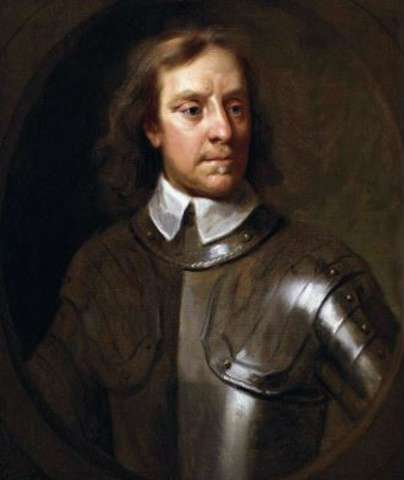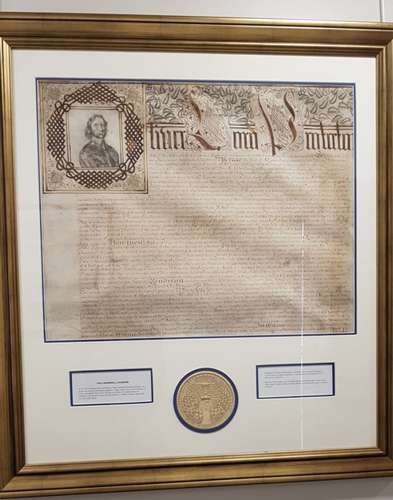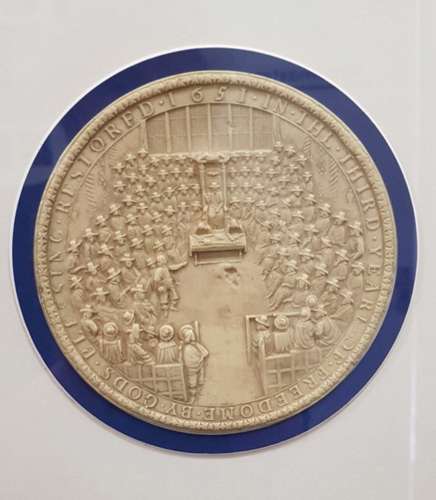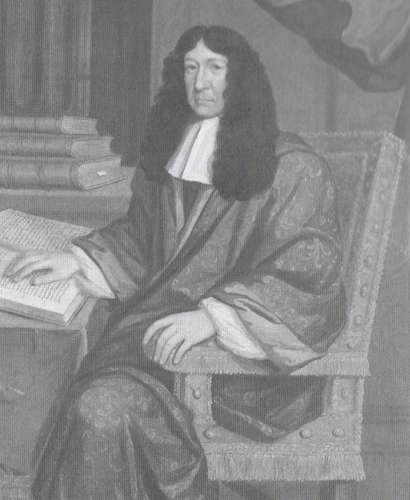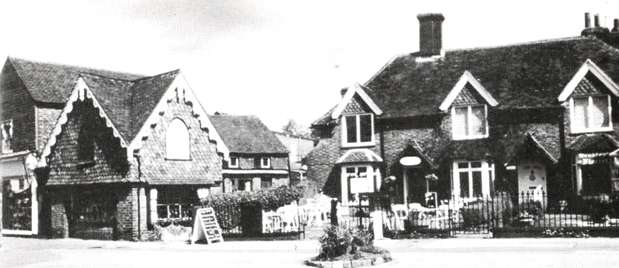
Cromwell Cottage and Oliver House (Cranleigh Guide, 1994)
Cranleigh has shown its appreciation of Oliver Cromwell by commemorating him in the names of a street, a house and a tea shop (closed last year, sadly). Why is this?
The reason goes back more than 360 years.
On May 15th 1657, Oliver Cromwell, Lord Protector of England, made a grant to Sir Arthur Onslow of Knowle, Michael Pyke, the rector, and the inhabitants of the ‘towne of Cranley’. (Sir Arthur had been left in charge at Knowle, when his father, Sir Richard Onslow, moved to Clandon in 1644.) Cromwell had received a petition from them for permission to hold two fairs. So he ordered an inquiry to be held by the sheriff of Surrey, Sir Arthur Pride, in Shere, to discover whether such fairs would cause any ‘damage or prejudice’. (Sir Arthur Pride is remembered in history for having carried out a ‘purge’ of MPs in 1648, on behalf of the Army, known as ‘Pride’s Purge’.)
Cromwell, painted ‘warts and all’ by Samuel Rogers in 1656, the year before he made this grant to Cranleigh (National Gallery)
The sheriff evidently reported favourably, so this grant was issued, from Westminster, on an impressively-large paper sheet, measuring 24 x 30 inches, with an elaborate heading, and a small portrait of Cromwell within the capital ‘O’. Cromwell’s seal was originally attached at the bottom. The charter was kept at Knowle, but Gordon Harvey, owner of Knowle 1960-70, passed it to Cranleigh School for safe keeping, and it is now framed and displayed there.
The charter granted permission to hold two fairs each year, one on the Tuesday after Whitsun, and the other on September 6th, unless this fell on the ‘Lord’s Day’, in which case it should be on the next day. A small, informal, court that could dispense speedy justice was to be held during the fairs, to cope with petty crime. This was known, rather delightfully, as a court of Piepowder (derived from the French ‘pieds poudrés’ or the dusty feet of the travelling traders). These essential points were padded out in the charter with lots of repetition, either to make sure that the details were clear or because the clerk was paid by the number of words he wrote.
Oliver Cromwell’s charter to Cranleigh (photo JMH, courtesy of Cranleigh School)
Incidentally, there is no suggestion that Cromwell himself had ever been to Cranleigh, or stayed at Knowle, or permitted these fairs out of gratitude for anything.
The people of Cranleigh must have been delighted, as the right to hold a fair was highly valued. A fair would bring many folk into Cranleigh from the surrounding districts and would stimulate trade. Visiting pedlars would bring luxuries not normally seen, such as ribbons, jewellery, dolls, and goodies like gingerbread. There might be stuntmen or showmen with exotic animals – even performing bears – or perhaps dwarfs. Probably there would be musicians, providing opportunity for dancing. A fair would be an exciting break in the monotony of normal life.
The seal depicts the House of Commons with the inscription ‘By God’s pleasing, restored 1651 in the third yeare of freedome’
For centuries, nearby Shalford held what was known as ‘the great fair of Shalford’, for which permission was granted in King John’s reign in the early 1200s. A three-day event, centred on August 15th, it is said to have covered 140 acres in its heyday and attracted merchants from all over the country. The name, the ‘Great Fair’ has recently been revived.
John Bunyan’s Pilgrim’s Progress, published 21 years after Cranleigh’s charter, famously described an imaginary Vanity Fair, which was no three-day event but a non-stop one. This may be modelled on the fair in Bunyan’s home village of Elstow, Beds., or the great Stourbridge Fair, held in Cambridge. Other famous fairs were Widdecombe Fair (with ‘old Uncle Tom Cobleigh and all’), Scarborough Fair and Bartholomew Fair. Most of them ceased, for economic reasons, in the late eighteenth century, or were suppressed because of public disorder. St Giles Fair in Oxford has lasted to the present day, starting on St Giles day, September 1st, though it is now simply a funfair.
Sir Arthur Onslow (1622-88), 2nd baronet (Budgen, Cranleigh: a History, portrait formerly at Clandon House – I hope it was saved in the 2015 fire)
It is not known why our fair was held on September 6th. December 6th was the saint’s day of Cranleigh’s St Nicolas church: definitely not a suitable day for a fair.
We know disappointingly little about Cranleigh’s fairs, and whether they lived up to the high hopes for them, but in the mid 19th century an annual cattle fair was still held here each Whit Tuesday. And in David Mann’s boyhood there was still a fair, held every year in the main street, where the Fountain and War Memorial are now.
The Cranleigh History Society meets on the second Thursday of each month at 8.00pm in the Band Room. The next meeting will be on Thursday April 14th, when June Davey will speak on ‘West Horsley Place’.

